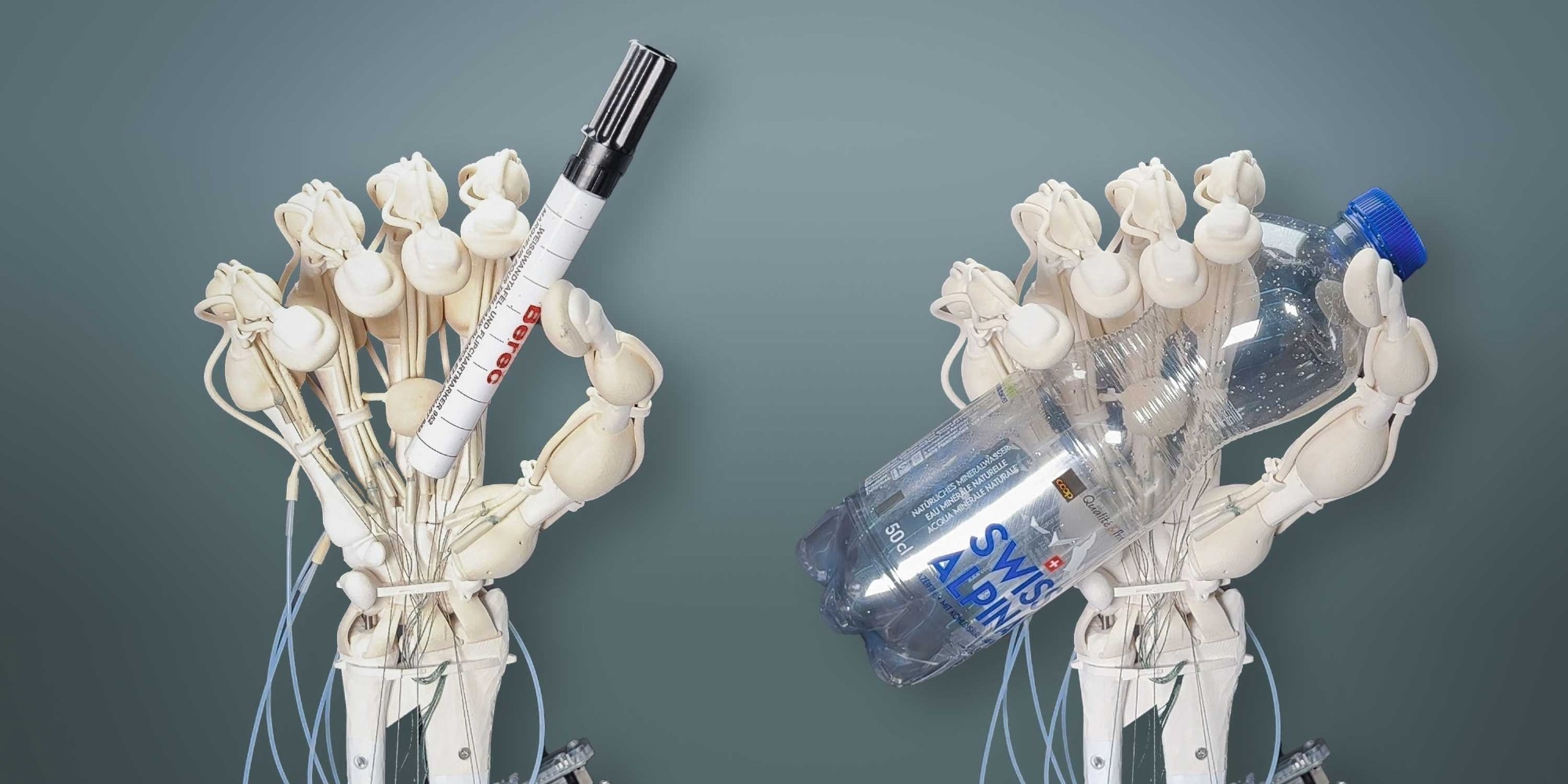3D printing is continuously evolving, and the materials that can be employed have grown significantly. While the technology was previously restricted to fast-curing plastics, it is now also suited for slow-curing plastics. These have significant advantages since they have improved elasticity and are more durable and resilient.

3D printed in one go: A robotic hand made of varyingly rigid and elastic polymers. Image Credit: ETH Zurich/Thomas Buchner
The usage of such polymers is enabled by a novel technique developed by ETH Zurich researchers and a US start-up. As a result, researchers can now 3D print complicated, more durable robots from a wide range of high-quality materials in a single step. This innovative technique also facilitates the combination of soft, elastic, and hard materials. It can also be used by researchers to generate delicate structures and parts with cavities as needed.
Materials That Return to Their Original State
Researchers at ETH Zurich have printed a robotic hand with bones, ligaments, and tendons composed of several polymers all at once using this new technology for the first time.
We would not have been able to make this hand with the fast-curing polyacrylates we have been using in 3D printing so far. We are now using slow-curing thiolene polymers. These have very good elastic properties and return to their original state much faster after bending than polyacrylates.
Thomas Buchner, Doctoral Student, ETH Zurich
For the purpose of creating the elastic ligaments of the robotic hand, thiolene polymers are perfect.
Furthermore, thiolenes’ stiffness can be precisely adjusted to satisfy the needs of soft robotics.
Robots made of soft materials, such as the hand we developed, have advantages over conventional robots made of metal. Because they are soft, there is less risk of injury when they work with humans, and they are better suited to handling fragile goods.
Robert Katzschmann, Study First Author and Professor, ETH Zurich
Scanning Instead of Scraping
Layer by layer, nozzles deposit a specific material in a viscous form at each location in a 3D printer’s production process; a UV lamp then instantly cures each layer. An apparatus that removed surface imperfections after every curing step was used in earlier techniques. Only polyacrylates that cure quickly can be used with this. Scraper gum would be caused by slow-curing polymers like epoxies and thiolenes.
The researchers improved 3D printing by including a 3D laser scanner that instantly inspects each printed layer for any surface flaws to accommodate the usage of slow-curing polymers.
A feedback mechanism compensates for these irregularities when printing the next layer by calculating any necessary adjustments to the amount of material to be printed in real-time and with pinpoint accuracy.
Wojciech Matusik, Study Co-Author and Professor, Massachusetts Institute of Technology
This implies that the new technology merely accounts for the unevenness when printing the subsequent layer rather than attempting to smooth out uneven layers.
The new technology for printing was developed by MIT spin-off Inkbit. Researchers at ETH Zurich helped optimize printing technology for use with slow-curing polymers and created several types of robotic applications. The technique and several prototype applications have now been published in the journal Nature by the US and Swiss researchers.
Katzschmann’s group at ETH Zurich will make use of the technology to investigate new avenues, create more intricate structures, and create new applications. Inkbit intends to market the new printers and provide users with a 3D printing service through the usage of this new technology.
Printed robots with bones, ligaments and tendons
Video Credit: ETH Zurich / Nicole Davidson
Journal Reference
Buchner, T. J. K., et al. (2023) Vision-controlled jetting for composite systems and robots. Nature. doi:10.1038/s41586-023-06684-3